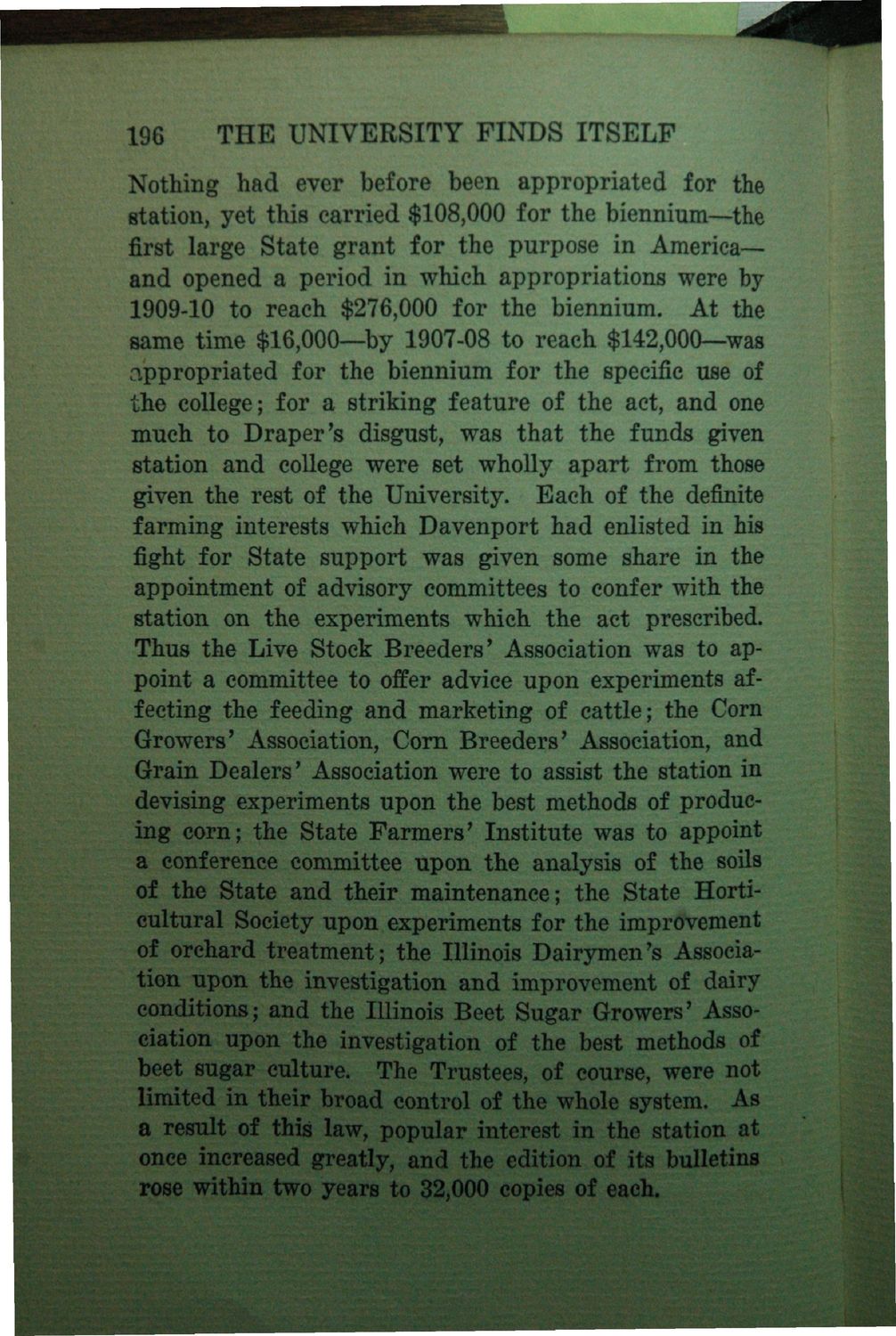| |
| |
Caption: Book - History of the University (Nevins)
This is a reduced-resolution page image for fast online browsing.

EXTRACTED TEXT FROM PAGE:
196 THE UNIVERSITY FINDS ITSELF Nothing had ever before been appropriated for the station, yet this carried $108,000 for the biennium—the first large State grant for the purpose in America— and opened a period in which appropriations were by 1909-10 to reach $276,000 for the biennium. At the same time $16,000—by 1907-08 to reach $142,000—was appropriated for the biennium for the specific use of the college; for a striking feature of the act, and one much to Draper's disgust, was that the funds given station and college were set wholly apart from those given the rest of the University. Each of the definite farming interests which Davenport had enlisted in his fight for State support was given some share in the appointment of advisory committees to confer with the station on the experiments which the act prescribed. Thus the Live Stock Breeders' Association was to appoint a committee to offer advice upon experiments affecting the feeding and marketing of cattle; the Corn Growers' Association, Corn Breeders' Association, and Grain Dealers' Association were to assist the station in devising experiments upon the best methods of producing corn; the State Farmers' Institute was to appoint a conference committee upon the analysis of the soils of the State and their maintenance; the State Horticultural Society upon experiments for the improvement of orchard treatment; the Illinois Dairymen's Association upon the investigation and improvement of dairy conditions; and the Illinois Beet Sugar Growers' Association upon the investigation of the best methods of beet sugar culture. The Trustees, of course, were not limited in their broad control of the whole system. As a result of this law, popular interest in the station at once increased greatly, and the edition of its bulletins rose within two years to 32,000 copies of each.
| |